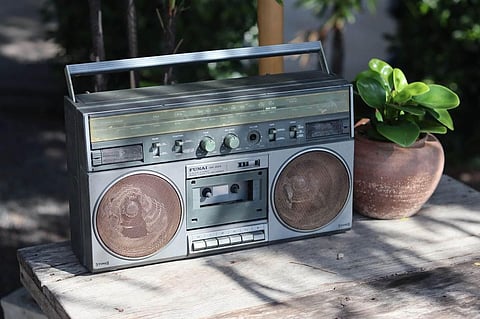
- Home
- न्यूजग्राम
- NewsGram USA
- India
- World
- Politics
- Entertainment
- Culture
- Lifestyle
- Economy
- Sports
- Sp. Coverage
- Misc.
- NewsGram Exclusive
- Jobs / Internships

BY NEHA HEGDE
A combination of a number of discoveries of electro-magnetic waves, radio waves, the wireless telegraph, and the triode by technicians and scientists from different countries gave rise to the development of radio broadcasting. It took ten years for this, whose sole use was point-to-point telecommunication. Basically, from ship to ship and ship to shore.
Radio waves were identified by the German physicist Heinrich Hertz in the year 1886. Radio transmitters and receivers were invented in the year 1895; the radio was used commercially by 1900. The first voice and music signals over radio waves were transmitted in December 1906 from Brant Rock, Massachusetts, Canadian experimenter Reginald Fessenden presented a talk and music of one hour for technical observers and any radio amateurs who might be interested to know.
Radio was and still is the main media for mass culture. This shift from technological usage to social usage led to two major incidents. (World War I and World War II)
Follow NewsGram on Twitter to stay updated about the World news.
World War prompted the industrialization of wireless telegraphy. Secondly, in the United States, the radio created a communication environment in which amateurs could operate freely. 'Hams'- wireless telegraphy hobbyists were used extensively during World War I. Radio broadcasting needed the mass production of receivers and marketing for it to be commercially viable. This came about during World War I largely because of military requirements. With World War I, the importance of the radio became evident and its usefulness increased practically. During the war, the military used it almost exclusively and it became a significant tool in sending and receiving messages to the armed forces in real-time, without the need of any physical messenger.
After the war, radio found its commercial base and was given a social form through a combination of several traditions. The earliest radio transmissions in 1915 were by universities to disseminate news. The first radio stations were set up in Pittsburgh, New York, and Chicago in the 1920s to broadcast about elections news sports events, and opera performances. By mid-1923 as many as 450 stations sprouted across the Unites States-all run by a poll of amateurs. These stations were later connected to AT & T to form the National Broadcasting Company (NBC) in 1926. The following year, few independent stations clubbed together to form Columbia Broadcasting System (CBS). The public service radio network, National Public Radio (NPR) was established much later. The British Government took the initiative to set up the BBC in 1920 as an autonomous public service corporation.
Coastal Defence Gun, Middle East, World War I, circa 1918. Unsplash
During World War II, the radio once again played a key role for both the U.S. and the U.K. With the help of journalism, radio broadcasted the news of the war to the public. It was also a rallying source and was used by the government to gain public support for the war. In the U.K. it became the primary source of information after the shut-down of television stations. The way in which radio was used also changed the world after World War II.
Want to read more in Hindi? Checkout: चौथी बार अमेरिका की हाउस स्पीकर चुनी गईं नैंसी पेलोसी
The first daily news bulletin in radio was introduced in 1936, but, World War II entailed the growth of a national network and an external service, and the installation of high power transmitters to expand coverage. Nazi propaganda was coming through loud and clear, and it needed to be countered. Thus was established the practice of all news bulletin being broadcasted on the radio from one central newsroom. During the War Years, as many as 27 bulletins were broadcasted each day.
Further, the External Services as also a Monitoring Service were set up as part of the Military Intelligence Wing. These were delinked when the war ended, and in India, All India Radio was transferred to the Department of Information and Broadcasting in 1946, and it remained with that Department/Ministry until September 1997 when the Prasar Bharati (Broadcasting Corporation of India), an autonomous statutory body, was continued under Prasar Bharati Act (1990).
It has played an impeccable role in the past and has been used to the fullest by people. The present-day scenario is different, though we have our new modern communications; radio has its own importance as well. There also exist new technological developments in the present-day radio. Timely, technologies change but their sole purpose remains the same.
